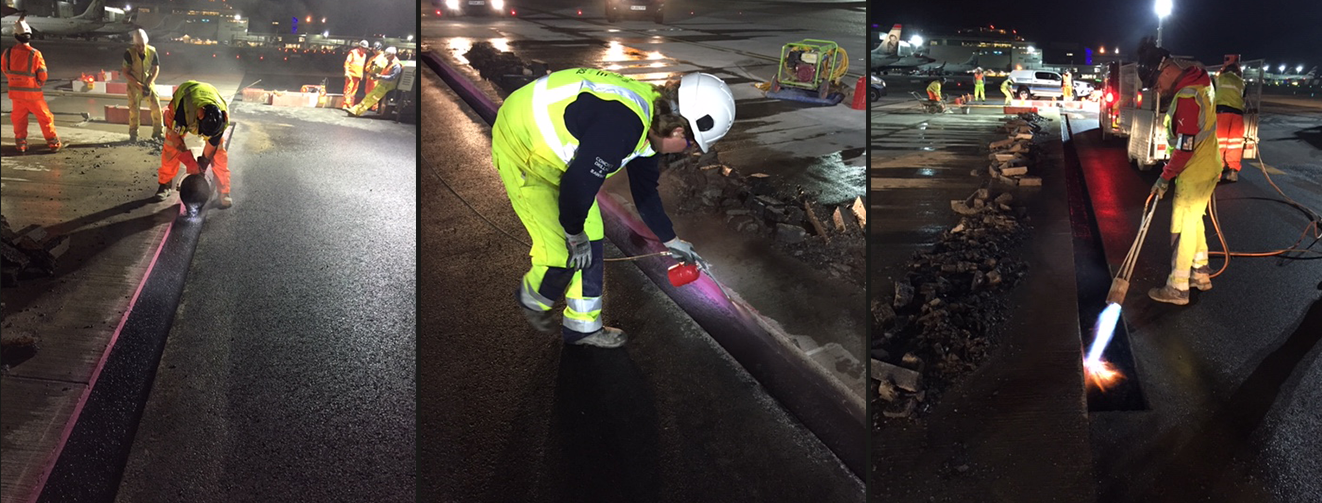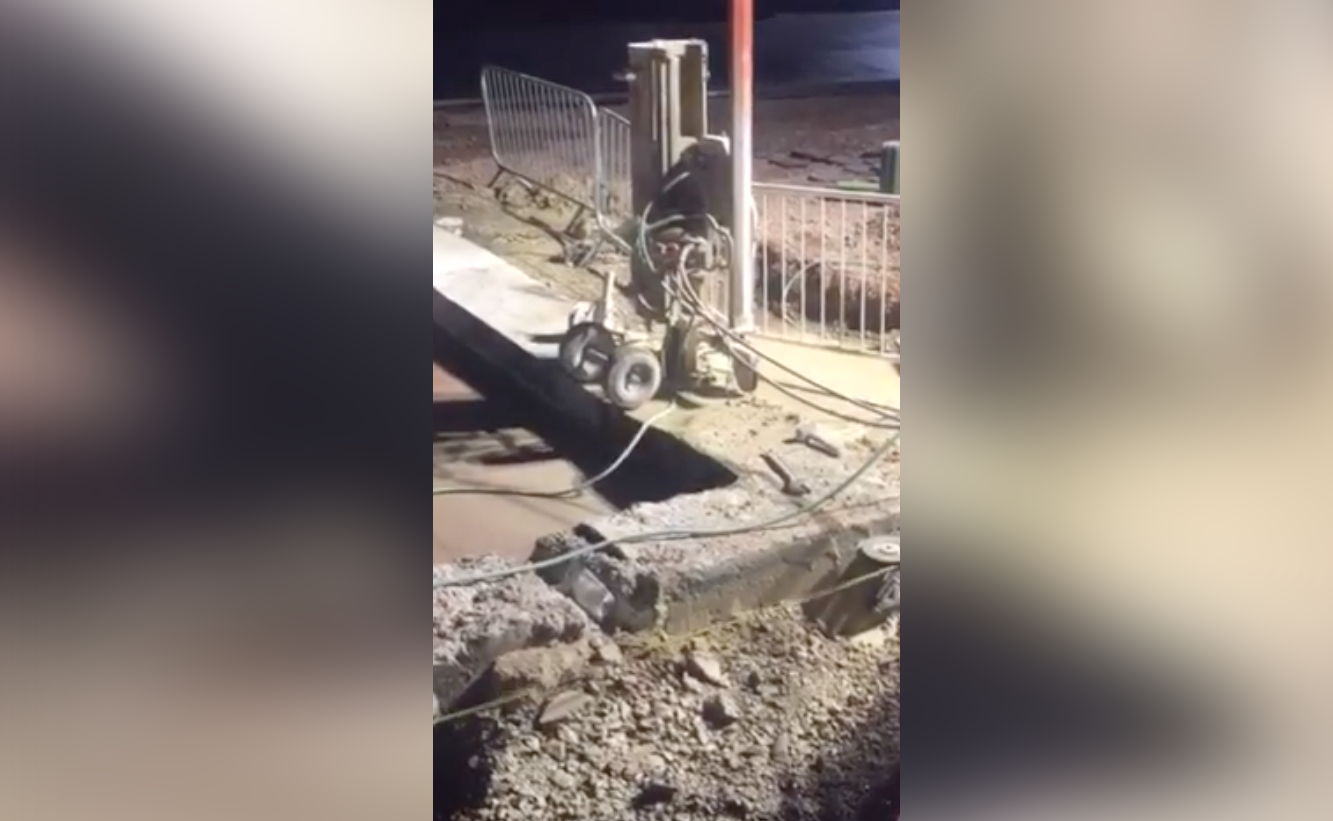
Castle & Pryor Work with Volker Fitzpatrick at Gatwick
What needed to be done?
Main contractor, Volker Fitzpatrick, are upgrading the Quebec and Juliet taxiways at London Gatwick Airport. This project is a part of Gatwick’s wider ‘Code F’ works, which will allow the airport to accommodate larger aircraft, like Boeing 747 and A380s. To make way for these bigger planes, the airport’s stands need to be reconfigured and their taxiways and maneuvering areas upgraded.
Why were C&P called in?
Volker’s team have been removing and reinstating concrete areas (similar to our work on Terminal 3 at London Heathrow Airport), upgrading the relevant services and installing airfield ground lighting (AGL). That meant we weren’t doing the drilling, sawing, or AGL installation - for a change!
After working together at Glasgow Airport earlier this year, Volker called us in to carry out joint sealing, including performance joints and thin bond concrete repairs, plus wire and track sawing work to reduce the height of existing service pits (large manholes).
What were we up against?
It’s been a challenging project across the board because much of the work had to be carried out during short, overnight closures. This means getting on-site around 11.30 pm and being finished up by 3.30/4.00 am, so the airfield can return to service by 5 am. The size of our team depends on what work we’re doing, but we’ve generally had a team of 4 to 5 on-site with a mix of day and night shifts. With only a four hour window to work in during these overnight closures, it’s definitely high-intensity work and requires a lot of mobilisation. In that time, we have to get our team and equipment on-site, get the job done and make sure everything is spotless in time for the first flight of the day. All the time, maintaining the extremely high standards that Gatwick and Heathrow are renowned for.
What equipment did we use?
- Wire saw
- Track saw
- Floor saw
- Sealant machine
- Hot air lances
- Shot blasters
Raising the service pits
Because the new taxiway will be slightly higher, we had to bring some of the service pits (large manholes) up to height. We used a combination of wire sawing and track sawing to cut the service pit walls, so they could then be raised to match the new height.
Man alive!
The largest manhole we worked on had 600mm thick walls and was 600mm deep. That’s a lot of cutting! And as always with live airport work, we had a very short time to do it in. Due to its size, we used a wire saw with various off-set pulleys and Volker put a protective platform underneath the cut line to protect the services below.

Before we could access the largest pit, the existing pit cover - measuring 7.5m2 x 300mm thick weighing in excess of 40 tonnes - had to be removed. The problem was, there was no way to be sure if the cover was connected to the walls of the pit, or sitting on a dry joint. If the cover was tied to the walls, there would be a lot of extra cutting required to isolate and remove it. When Volker posed the question to us, we came up with this solution:
We started by drilling 4nr 48mm diameter holes 600mm deep at the joint where the lid met the wall, then inserted 2nr hydraulic bursting rams. When activated, these rams lifted the lid free, showing that the lid was not fixed to the walls. As you can imagine, the client was relieved! And we had it all wrapped up in one overnight shift.
Installing the performance joint
This where the asphalt and the concrete join, forming an interface between the two materials. Usually, the asphalt comes right up to the concrete. But in this particular area, the join will be right in front of the stands where there will be heavy traffic from large aircraft on a regular basis. If the asphalt met the concrete directly here, there’s a good chance the aircraft maneuvering and turning could damage those edges.
The solution? We cut out a section of the asphalt and reinstated it with high performance material, MaxiFlex, which will stand up to this heavy traffic.
What will the end result be for Gatwick Airport?
Once the works are completed, Gatwick will have an upgraded, rehabilitated taxiway that can take larger Code F aircraft. Just what they need to welcome lots more passengers for many years to come!